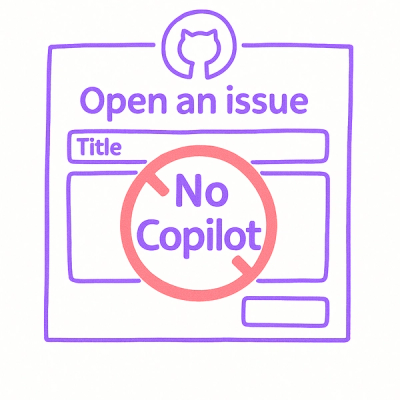
Security News
Open Source Maintainers Demand Ability to Block Copilot-Generated Issues and PRs
Open source maintainers are urging GitHub to let them block Copilot from submitting AI-generated issues and pull requests to their repositories.
github.com/BaseMax/real-time-notifications-nats-go
A repository showcasing the implementation of real-time notifications using NATS messaging system and the Go programming language. Learn how to build responsive applications with instant notifications.
Welcome to the Real-time Notifications with NATS and Go repository! In this project, we'll explore the implementation of real-time notifications using the NATS messaging system and the Go programming language. By building this application, you'll gain valuable insights into creating responsive and engaging applications with instant notifications.
The primary objective of this project is to demonstrate how to utilize the NATS messaging system to enable real-time notifications in a Go-based application. We'll explore how to set up event communication, publish and subscribe to events, and integrate this functionality into a responsive user interface.
Follow these steps to set up and run the project on your local machine:
git clone https://github.com/BaseMax/real-time-notifications-nats-go.git
cd real-time-notifications-nats-go
Backend Setup: Navigate to the backend directory and install the required dependencies.
cd backend
go mod download
Start the Backend: In the backend directory, start the Go server.
go run main.go
Access the Application: Open your web browser and visit http://localhost:8080 to access the real-time notifications application.
Contributions to this repository are encouraged! To contribute, please follow these steps:
| Endpoint | Method | Postman |
|---|---|---|
| /register | POST |  |
| /login | POST |  |
| /refresh | POST |  |
| /users/:id | GET |  |
| /users | GET |  |
| /users/:id | DELETE |  |
| /users/:id | PUT |  |
| /notifications | raw |  |
| /activities | GET |  |
| /activities/seen | POST |  |
| /products | POST |  |
| /products/:id | GET |  |
| /products | GET |  |
| /products/:id | PUT |  |
| /products/:id | DELETE |  |
| /orders | POST |  |
| /orders/:id | GET |  |
| /orders | GET |  |
| /orders/:id | DELETE |  |
| /orders/:id/status | GET |  |
| /orders/first | GET |  |
| /orders/first/done | POST |  |
| /orders/first/cancel | POST |  |
| /refunds/:order_id | POST |  |
| /refunds/:id | GET |  |
| /refunds | GET |  |
| /refunds/:id | DELETE |  |
| /refunds/:id/statys | GET |  |
| /refunds/:id/cancel | POST |  |
| /refunds/first | GET |  |
| /refunds/first/done | POST |  |
| /refunds/first/cancel | POST |  |
In the Real-time Notifications with NATS and Go project, the database and schema play a vital role in managing user activities, events, and preferences. An effective schema design ensures efficient data storage and retrieval, while accommodating the requirements of real-time notifications.
For this project, we'll use a relational database to store user activities and event data. PostgreSQL, a powerful open-source relational database system, can be an excellent choice due to its robust features and support for complex queries.
The event_data field in the activities table will hold the specific data associated with each event. For example, when a user completes a task, the event_data field could store information like task ID, task title, and completion status.
The subscription_preferences field in the users table will hold user preferences for event subscriptions. This can be structured as a JSON object where each event type maps to a subscription status (e.g., true for subscribed, false for unsubscribed). This allows users to customize which events they want to receive notifications for.
The events stored in the database can be published to the NATS messaging system whenever an activity occurs. Subscribers can then listen to these events and generate real-time notifications based on user preferences.
A well-designed database schema is a crucial foundation for capturing and managing user activities and events in the context of real-time notifications. By utilizing PostgreSQL and structuring the schema effectively, you'll be able to seamlessly integrate event sourcing and real-time notifications into your application.
Feel free to adjust the schema according to your specific requirements and preferences. Always ensure your schema supports efficient queries and data retrieval while accommodating the real-time nature of your project.
This project is licensed under the GPL-3.0 License.
Copyright 2023, Max Base
FAQs
Unknown package
Did you know?

Socket for GitHub automatically highlights issues in each pull request and monitors the health of all your open source dependencies. Discover the contents of your packages and block harmful activity before you install or update your dependencies.

Security News
Open source maintainers are urging GitHub to let them block Copilot from submitting AI-generated issues and pull requests to their repositories.

Research
Security News
Malicious Koishi plugin silently exfiltrates messages with hex strings to a hardcoded QQ account, exposing secrets in chatbots across platforms.

Research
Security News
Malicious PyPI checkers validate stolen emails against TikTok and Instagram APIs, enabling targeted account attacks and dark web credential sales.